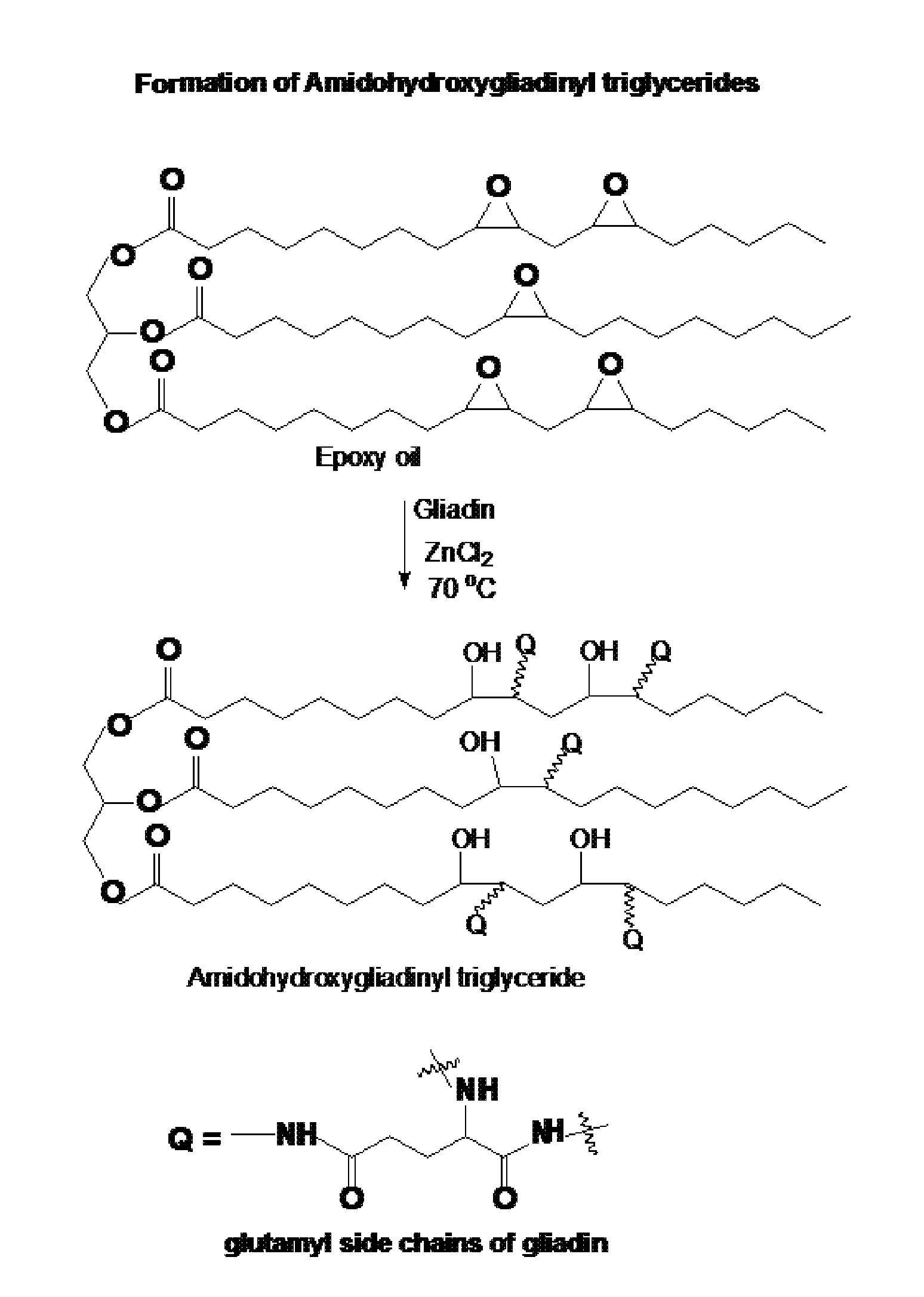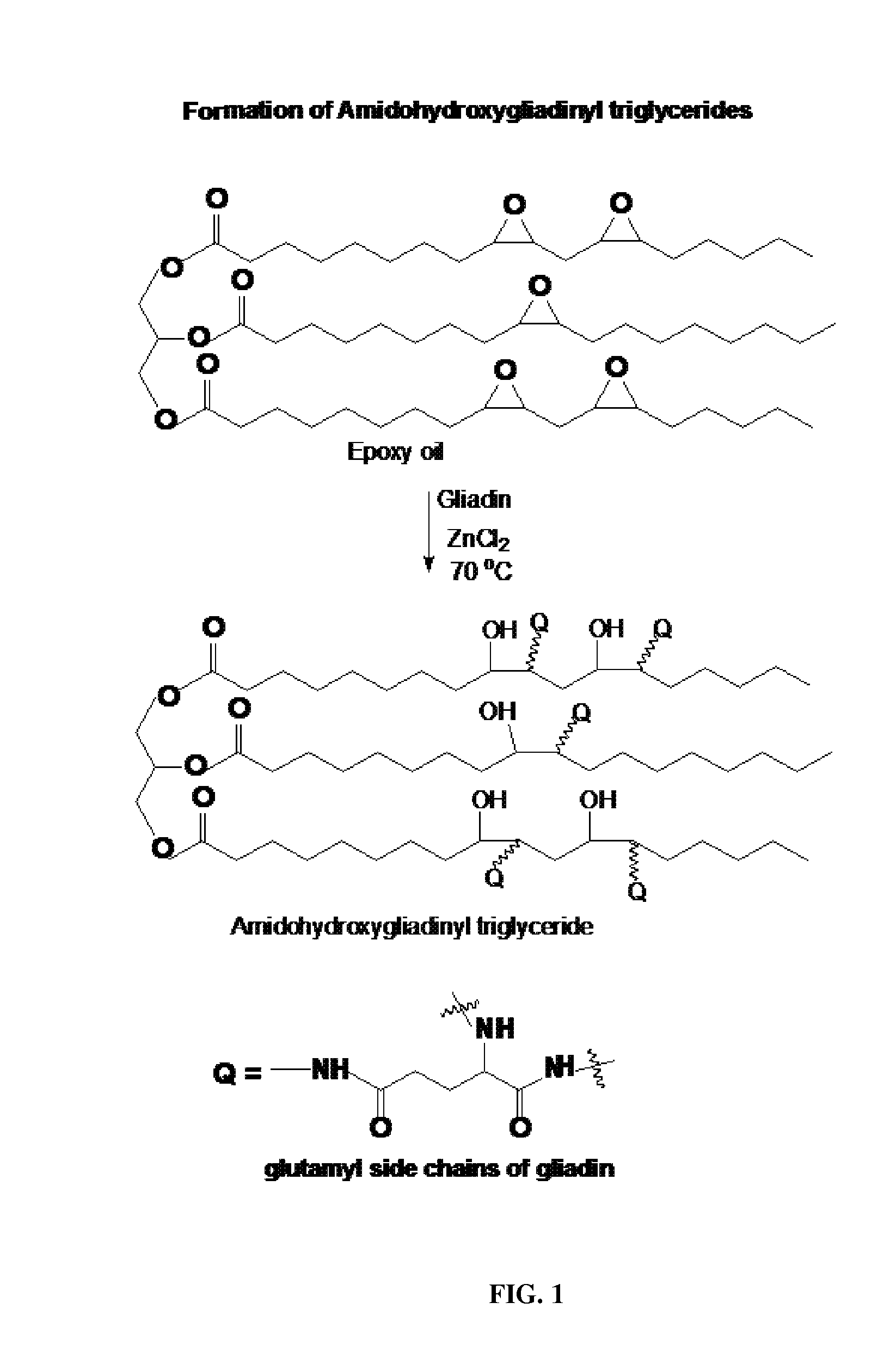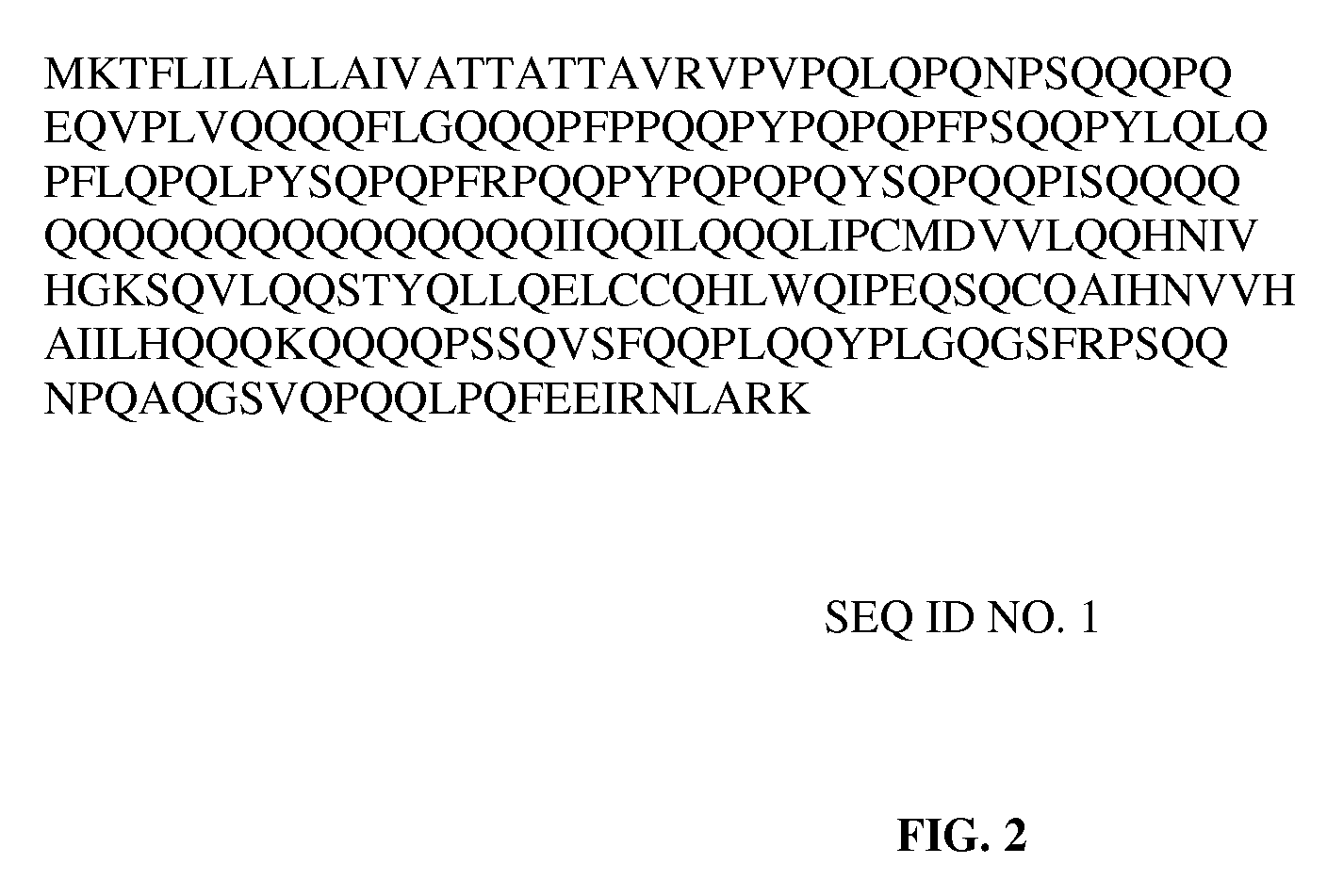Elastomer product from epoxidized vegetable oil and gliadin
a technology of vegetable oil and gliadin, which is applied in the field of elastomer products, can solve the problems of bpa polymetric products and various contaminants, and achieve the effects of improving the permeability of bpa polymetric products and reducing the production cos
- Summary
- Abstract
- Description
- Claims
- Application Information
AI Technical Summary
Benefits of technology
Problems solved by technology
Method used
Image
Examples
example 1
Milkglyde
Synthesis of Milkweed Epoxy triglyceride
[0030]In a typical process reprocessed milkweed oil 582.0 g (673.76 mmol, iodine value, IV=111.4) were placed in a 1 L 3-necked jacketed flask equipped with a mechanical stirrer and heated to 45.5° C. Formic acid (96%, 39.7 g, 0.3 equiv / mol of C═C) was added and the mixture stirred to homogeneity. Hydrogen peroxide (50%, 320 mL, 5.65 mol) was then added slowly (i.e. dropwise). At the end of hydrogen peroxide addition the temperature was raised to 70° C. and vigorous stirring was continued for 7 h when a sample of the reaction mixture showed complete absence of the vinylic protons of the starting material. The heat source was then removed, the reaction mixture allowed to cool to near room temperature and transferred to a separatory funnel with ethyl acetate as diluent. The material was washed with saturated NaCl (300 mL×4) followed by saturated Na2CO3 (40 mL) in more NaCl solution. The washes were discarded. When pH 7.5 was reached, th...
example 2
Saliglyde
Synthesis of Salicornia Epoxy Triglyceride.
[0032]In a dry 1000 mL three-necked, round-bottomed jacketed flask equipped with an overhead stirrer and heated to 40° C., Salicornia oil (475.5 g, 583.65 mmol, iodine value=132.8) and 99% formic acid (49.56 g, 40.6 mL) were placed. The reaction mixture was vigorously stirred to homogeneity and hydrogen peroxide (50%, 274.87 g, 4.0416 mol, 232.9 mL) was added slowly. At the end of peroxide addition, the reaction temperature was raised to 70° C. while vigorous stirring was continued for 5 h when FT-IR spectrum of a reaction sample showed complete reaction. The heat source was turned off and the reaction was allowed to cool to room temperature. The contents of the reaction vessel were diluted with ethyl acetate (300 mL) and transferred into a separatory funnel. The separated aqueous layer was removed and the organic phase washed sequentially with brine (2×400 mL) followed with saturated Na2CO3 solution (50 mL) in additional saturated...
example 3
Soyglyde
Synthesis of Epoxy Soybean Triglyceride
[0034]In a dry 1000 mL three-necked jacketed reactor kettle equipped with an overhead stirrer, and an addition funnel and heated to 40° C., was added soybean oil (432.8 g, 0.494 mol). The oil was stirred vigorously and formic acid (99%, 34.12 g, 0.3 equiv) was added in one portion. This was followed by dropwise addition of 50% H2O2 (336 g, 9.88 mol). At the end of H2O2 addition the reaction temperature was raised to 70° C. and the reaction progress was monitored at 30 min. intervals by FT-IR spectrometry. At the end of 2 h, an FT-IR spectrum of a reaction sample showed complete disappearance of the 3010 cm−1 band of the starting olefin in the reaction product, the heat was turned off and the system allowed to cool to room temperature as stirring continued. The product mixture was diluted with ethyl acetate and poured into a stirring solution of saturated NaCl / Na2CO3. After effervescence had subsided, the organic phase was separated and ...
PUM
| Property | Measurement | Unit |
|---|---|---|
| Temperature | aaaaa | aaaaa |
| Temperature | aaaaa | aaaaa |
| Temperature | aaaaa | aaaaa |
Abstract
Description
Claims
Application Information
 Login to View More
Login to View More - R&D
- Intellectual Property
- Life Sciences
- Materials
- Tech Scout
- Unparalleled Data Quality
- Higher Quality Content
- 60% Fewer Hallucinations
Browse by: Latest US Patents, China's latest patents, Technical Efficacy Thesaurus, Application Domain, Technology Topic, Popular Technical Reports.
© 2025 PatSnap. All rights reserved.Legal|Privacy policy|Modern Slavery Act Transparency Statement|Sitemap|About US| Contact US: help@patsnap.com



